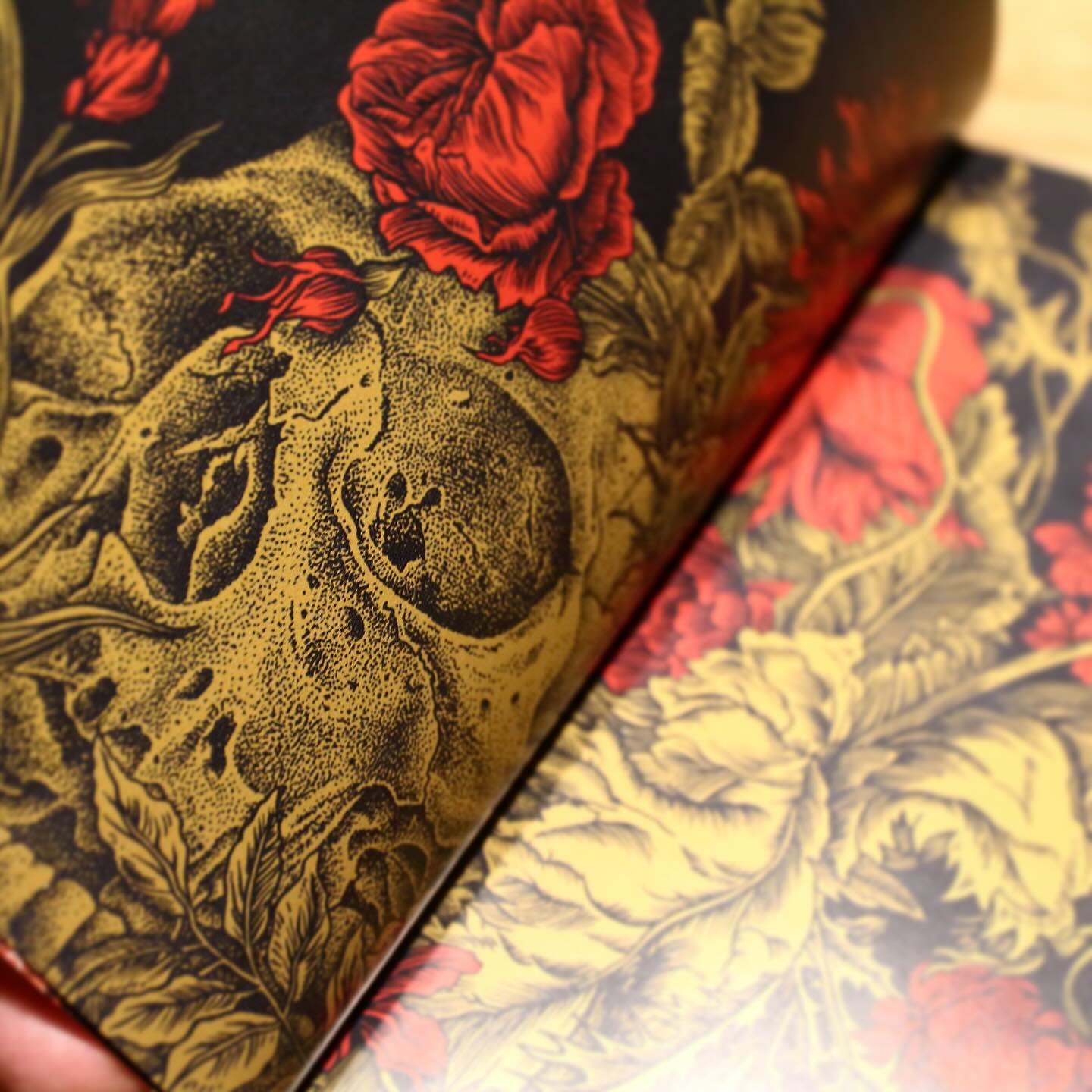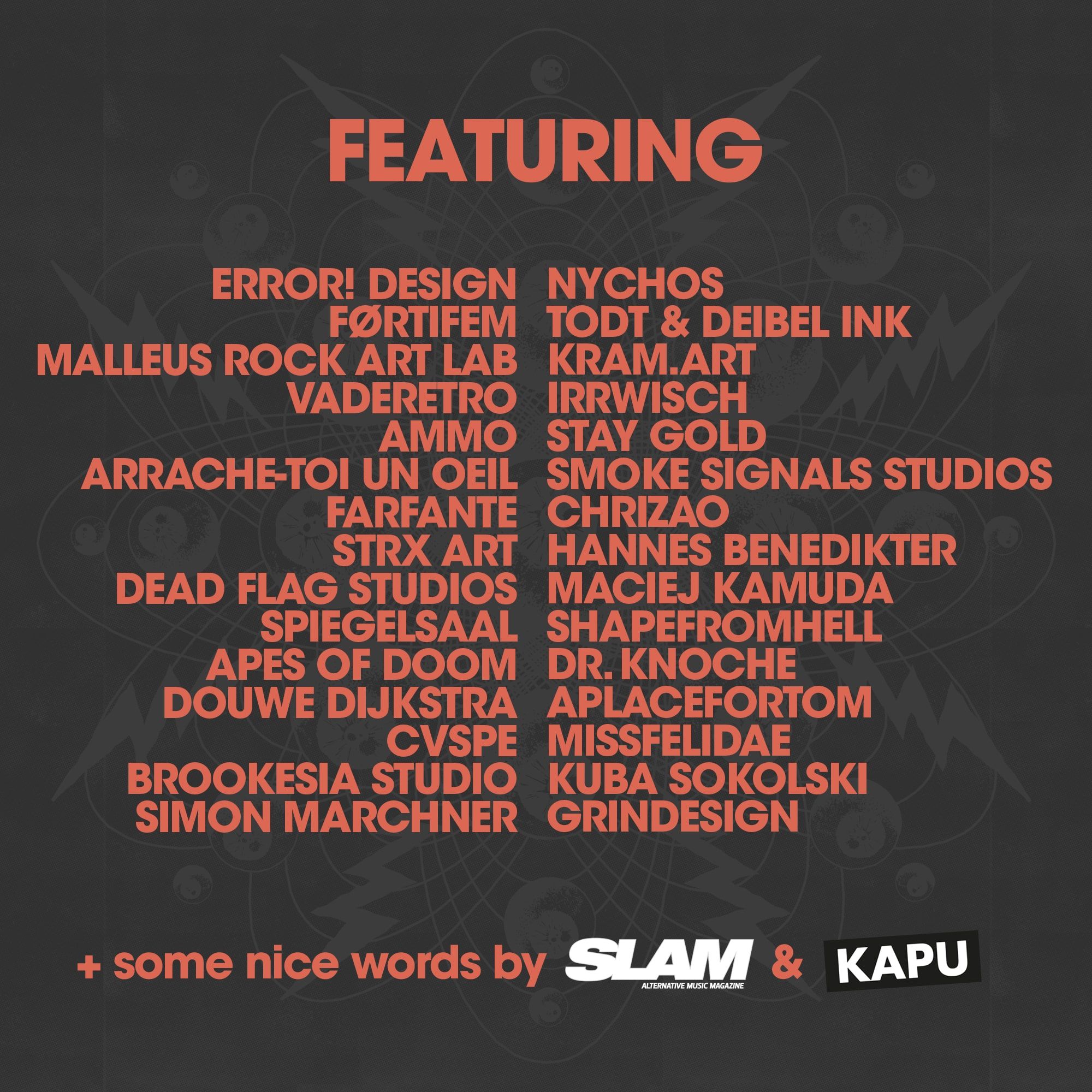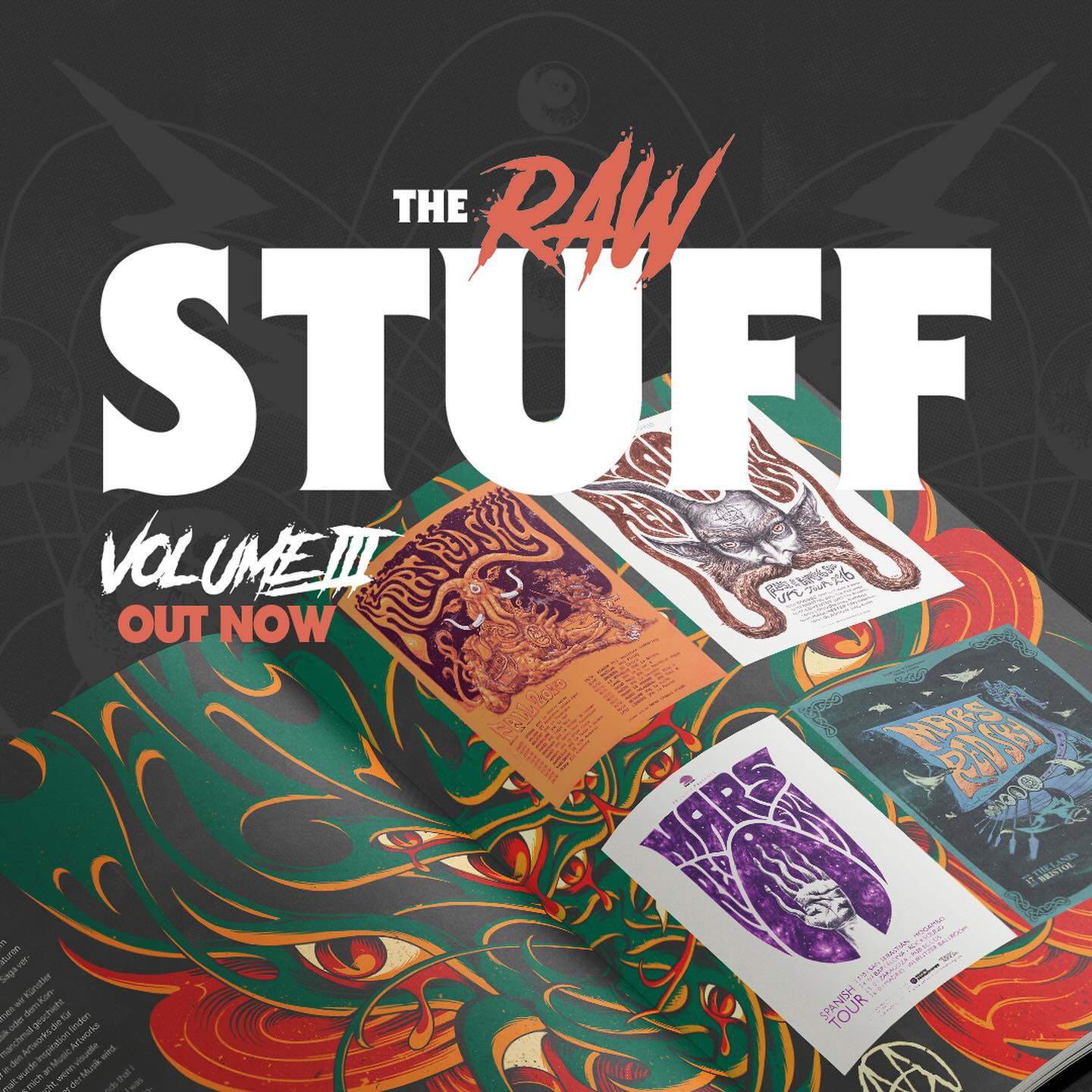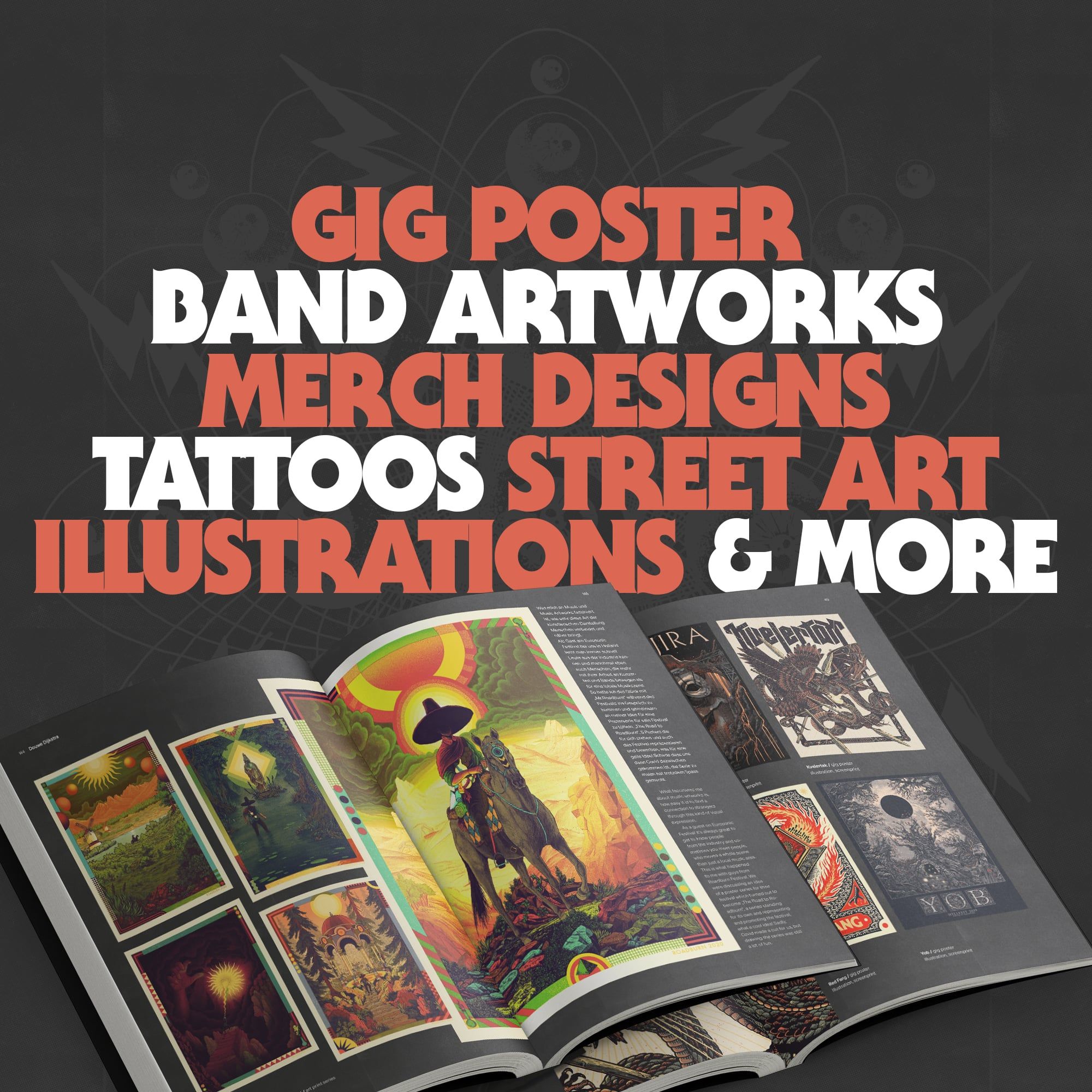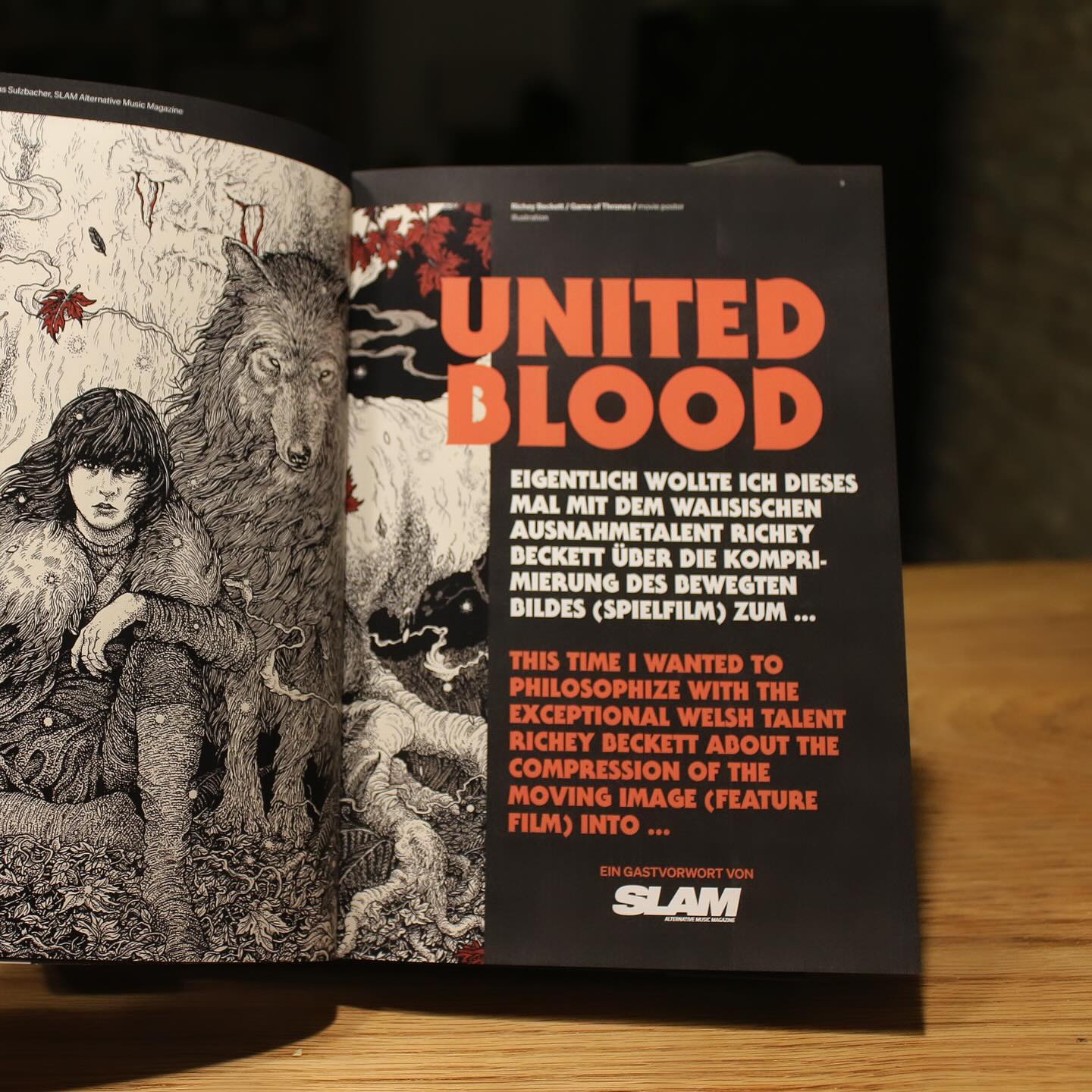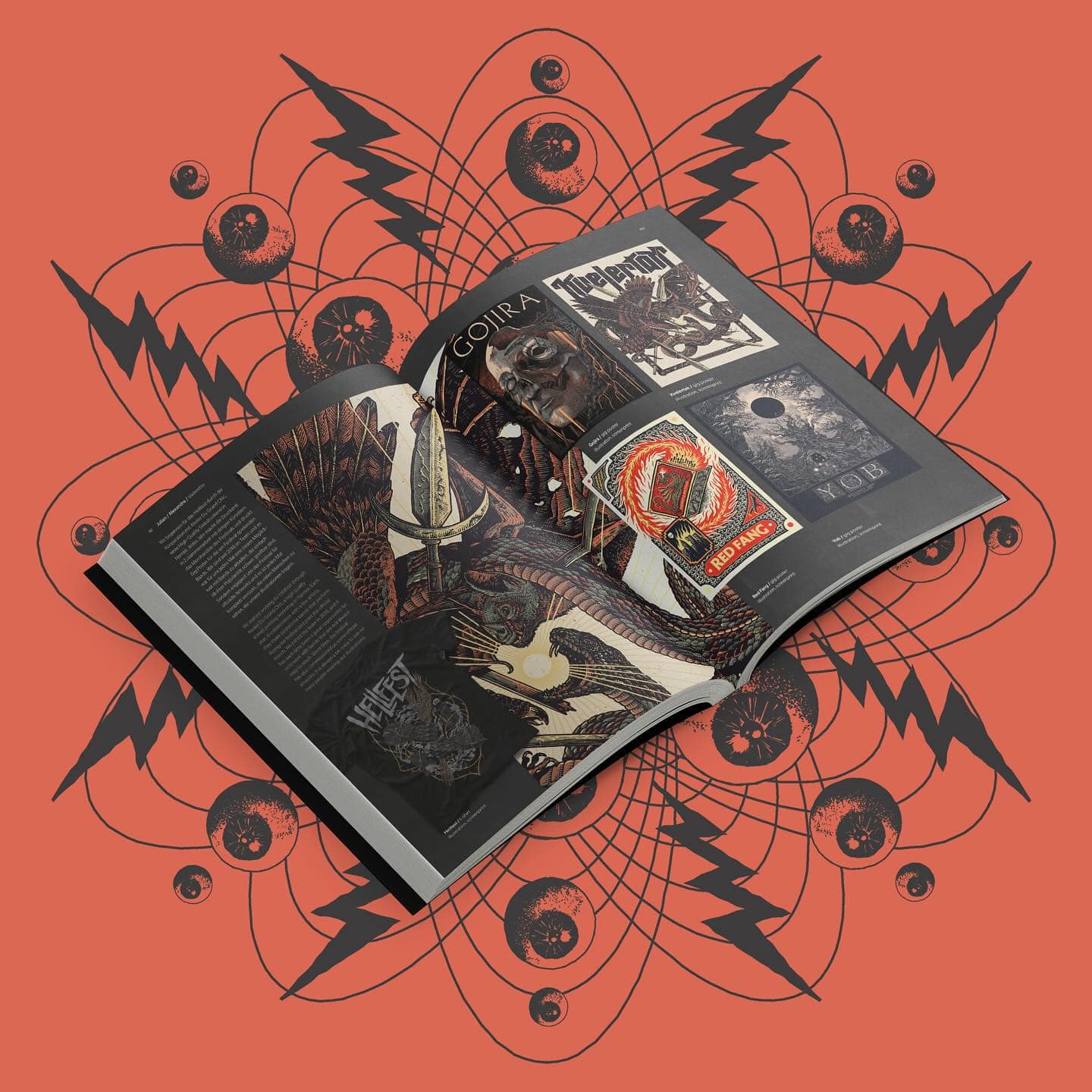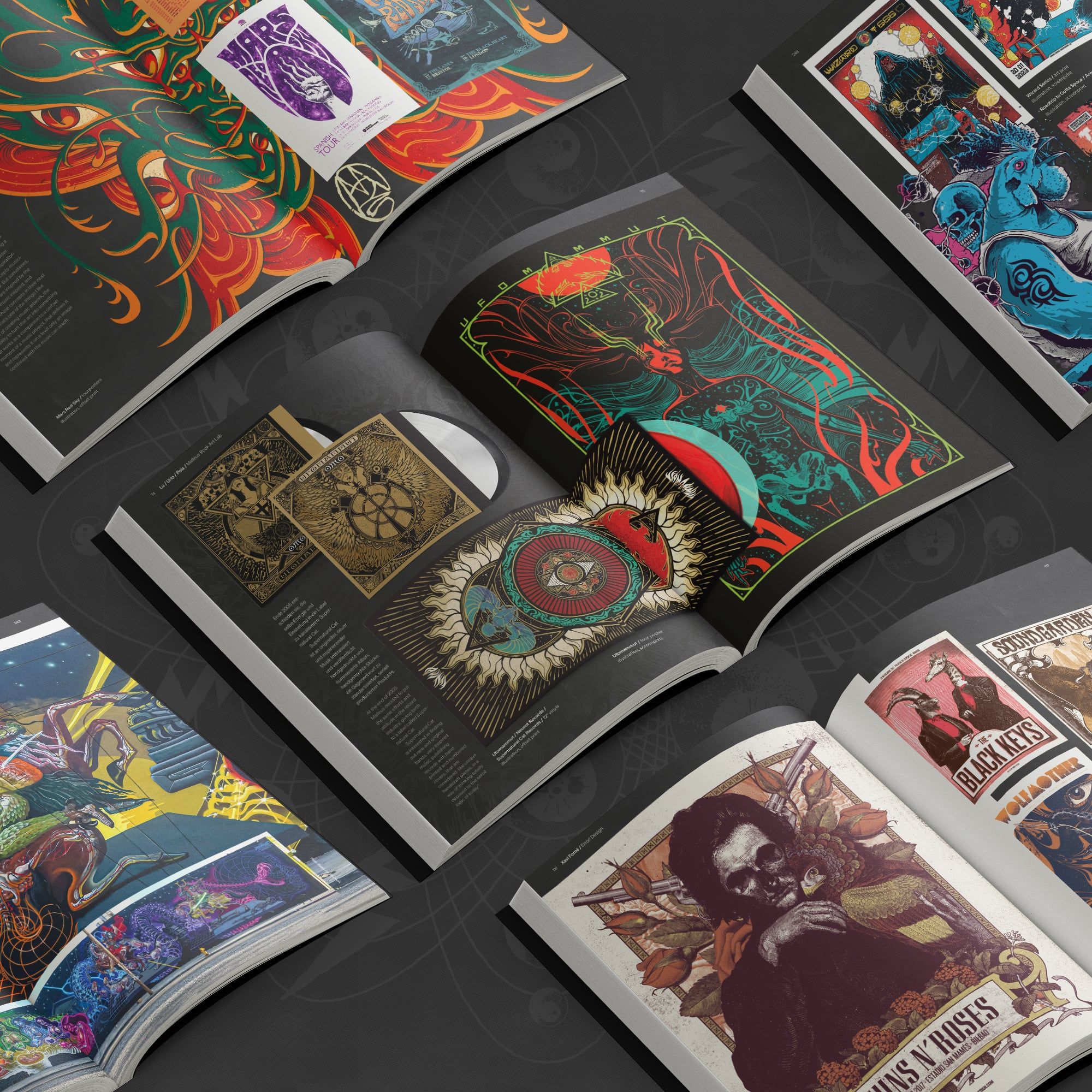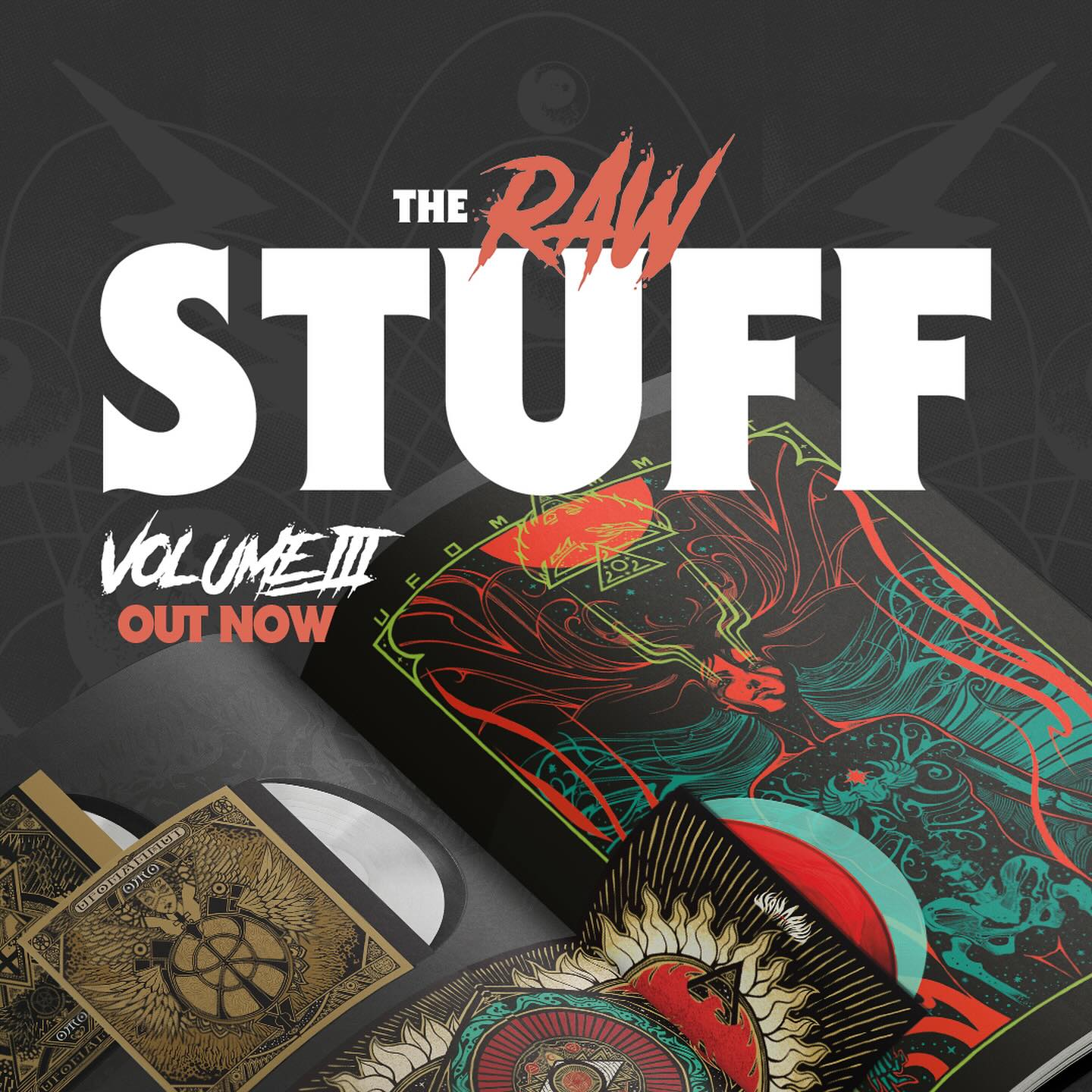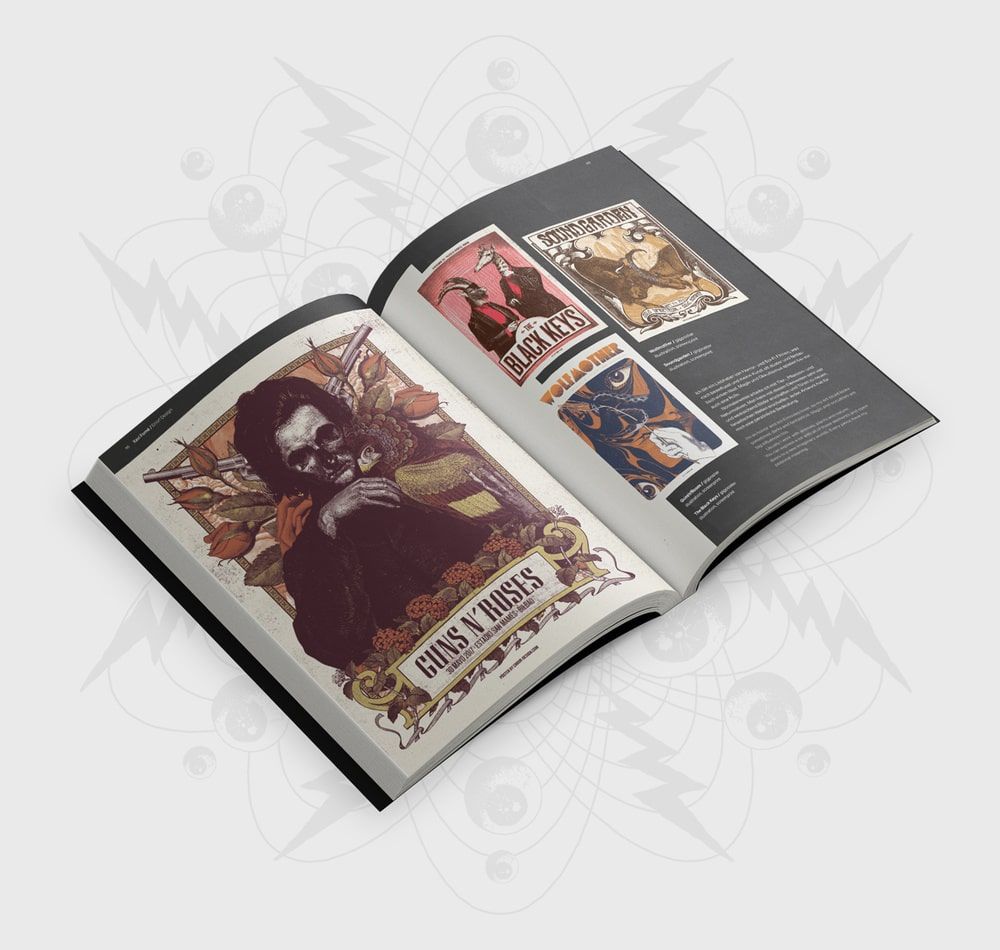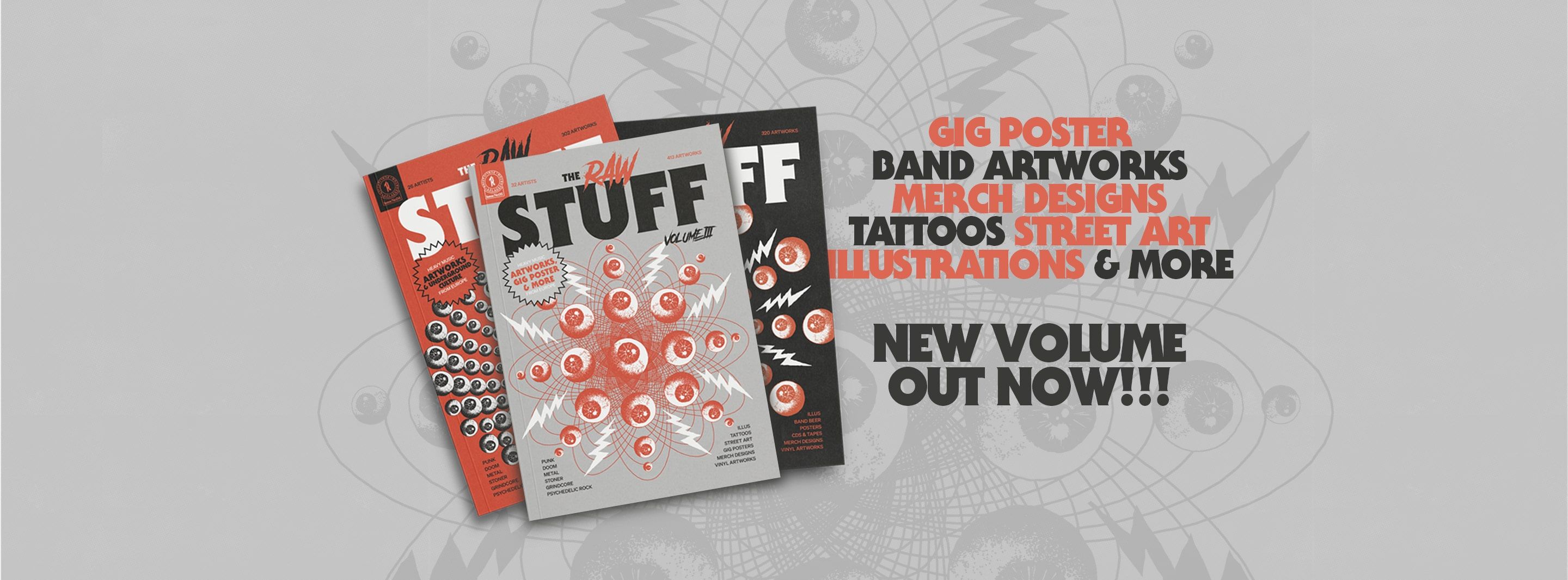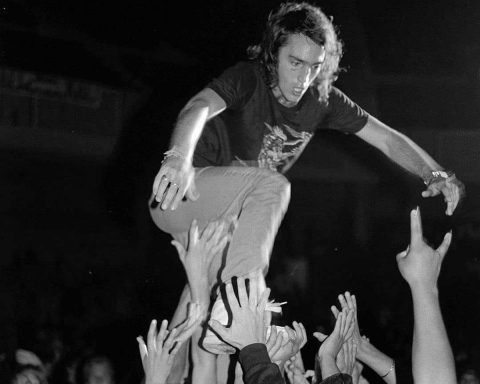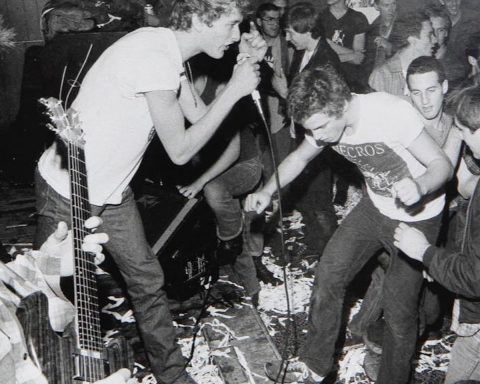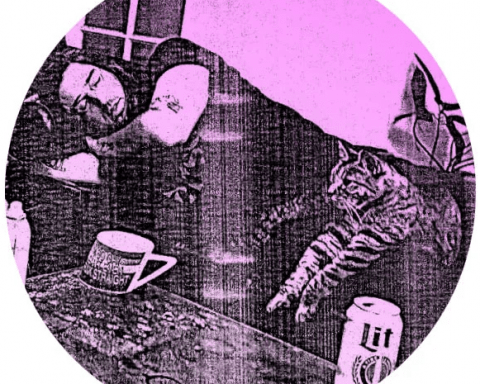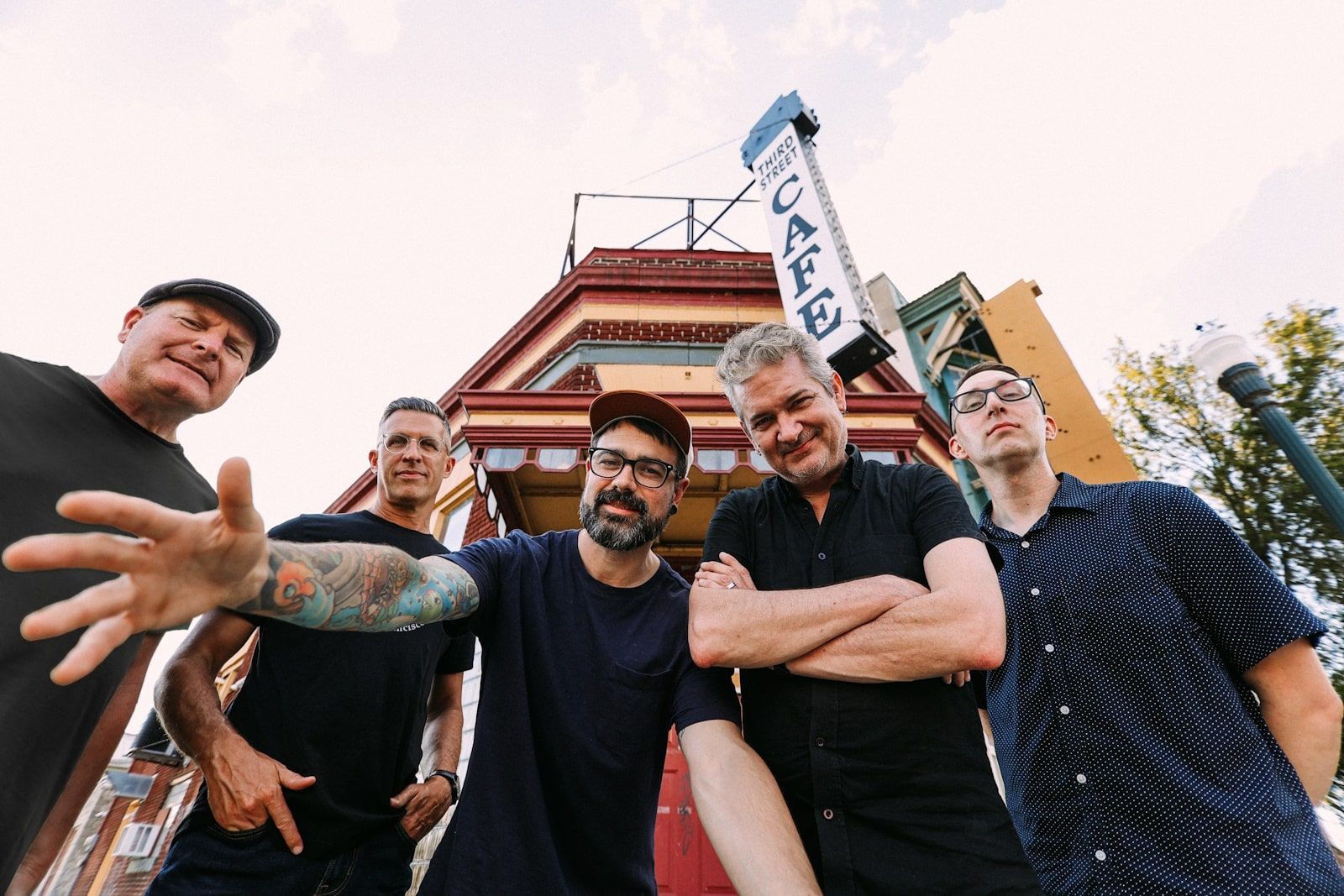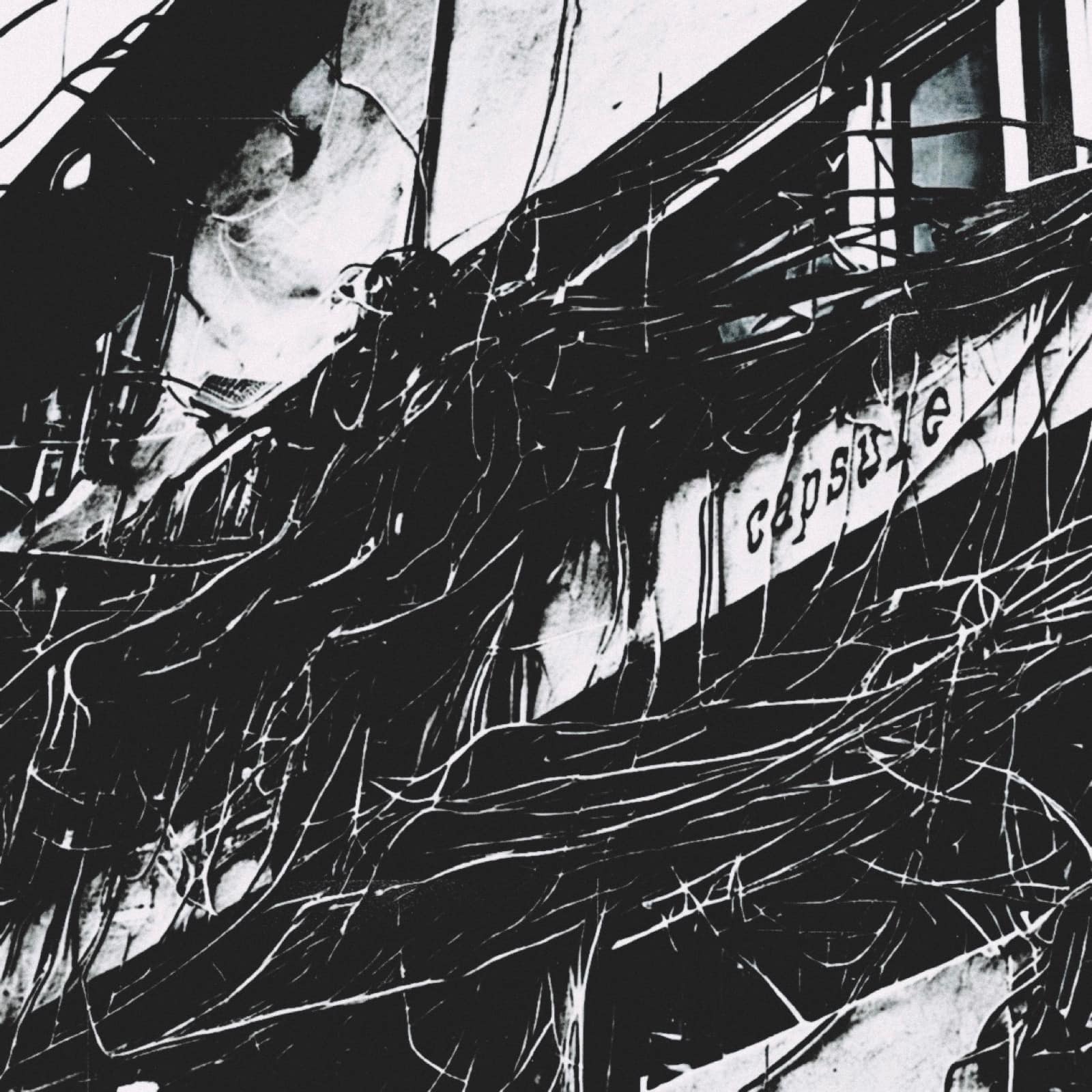A year ago, we introduced our readers to “THE RAW STUFF,” a unique project encapsulating the visceral and vibrant world of rock and metal artwork. Today, we revisit this extraordinary venture as it launches its third volume, bringing together a diverse array of visual artists from across Europe, with a special interview below. “THE RAW STUFF Vol. III” is not just a continuation but an expansion of this artistic narrative, featuring 32 artists from 12 European countries, contributing 413 artworks across 280 pages.
Based in Austria, this project serves as a testament to the symbiotic relationship between music and visual art.
It’s a celebration of the heavy music universe, encompassing everything from gig posters to vinyl artworks, tarot card designs, and even the unconventional – imagine Buzz Osborne on a kiwi, or an x-ray T-Rex. This volume holds surprises like a quirky receipt for chili oil, adding a personal touch to the compilation.
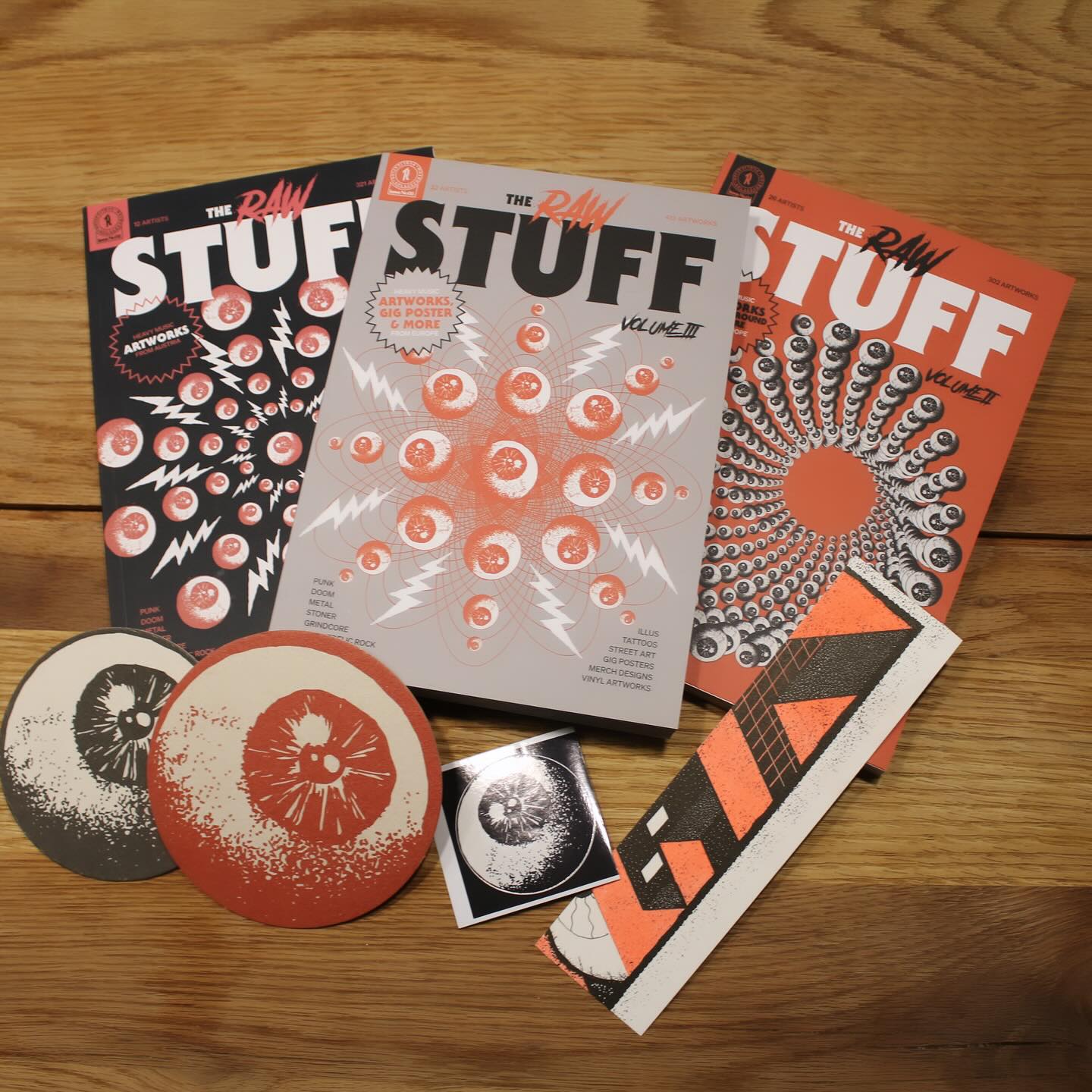
The book delves deep into the artistry behind more than 210 bands spanning rock, metal, and punk genres. It’s a visual feast that transcends boundaries, showcasing artists from various European nations, including Germany, Italy, France, Spain, Andorra, Portugal, the Netherlands, Belgium, the UK, Austria, Poland, and Hungary. This year’s edition highlights the work of not only major bands but also local underground acts, emphasizing the quality of visuals over mere fame.
In an exclusive overview of our interview with Thomas Gasperlmair, the creator of “THE RAW STUFF,” we delve into the fusion of visual art with diverse music genres. Gasperlmair discusses the deep-rooted connection between music and visual art, especially in genres like punk, rock, metal, and psychedelic. He emphasizes the importance of band artworks in setting the tone and ethos of the music, while also giving artists a platform to showcase their unique styles.
Gasperlmair sheds light on how the diverse cultural backgrounds of the artists influence the thematic narratives of the artworks, breaking stereotypes and geographical limitations. He also contrasts the visual representation in mainstream and underground music scenes, highlighting the authenticity and original concepts prevalent in underground acts.
The selection process for the artworks is based on regular contributions to band artworks, unique style, and high quality, rather than the size of the bands represented. Gasperlmair also discusses the project’s evolution, from its inception during the pandemic to its impact on the art and music communities, including exhibitions and collaborations.
Intriguingly, the book includes personal anecdotes and unconventional inclusions, like the chili oil receipt story from Fortifem, reflecting the artists’ personalities and creative freedom. This volume is a testament to the thriving and interconnected world of music and art, resonating personally with Gasperlmair and, undoubtedly, with its readers.
As we look forward to the evolution of “THE RAW STUFF,” it’s clear that this project is not just a collection of artworks; it’s a dynamic, living canvas of the heavy music world, celebrating the creativity and spirit of artists across Europe.
See the full interview with Thomas Gasperlmair, where we delve deeper into the heart of this unique art book project.
What inspired the fusion of visual art with diverse music genres in ‘THE RAW STUFF Volume III’, and how do you see this influencing the perception of both art forms?
Music and visual art has a really strong connection and are really influental for both artistic aspects AND they have a really long common tradition, especially when i think of the music genres (punk / rock / metal / psychedelic) and the works of the music artwork artists we display in the 3 books.
To me, good band artworks, illustrations, album covers or gig poster are so important and can be used in so many different and reasonable ways. they can show a glimpse of what’s behind the music, create a vibe and a state of mind even before listening to the presented music for the first time, they can be used to show certain ethics or beliefs of a group or a scene if needed. even the balance between the music and the visual differs and is something bands and their team can play with to create something “more” than “just” music and visual art.
And the best: there is not just this one formula that works for good band artworks, there are so many different but fitting approaches to display music in the right way to engage the quality of the music itself. this is what i’m hunting for with the 3 THE RAW STUFF editions and to give the creators of such artworks a kind of a platform.
How has the diverse cultural background of artists from 12 European countries influenced the thematic narratives of the artworks in this edition?
The main topic of THE RAW STUFF are heavy music artworks, means artworks, illustrations and designs for rock-, metal-, punk- or stoner/psychedelic-oriented bands and releases. when i started with the first international edition (Volume 2) last year i expected to meet a lot of similar styles or ideas per country, but i was surprised that there are no border-limitations – it feels like every artist is influenced by some others in this scene while almost everyone is doing his or her very own thing!
With every release i’m always trying to think a bit out of the box, too, and to keep an eye on music-related scenes like tattoing, street art or alternative illustration because they feel like they have a related background like underground music. thats why its not untypical to see band artwork creators working in these fields aswell, like grindesign who left his mark in creating death metal artworks and in the world-wide tattooscene or nychos, who mainly does street art but creates poster designs for bands like tool aswell.
In your view, how does the visual representation of music differ between mainstream and underground acts, and what unique qualities do underground acts contribute?
Hm thats a difficult task when you’re talking about punk or metal i think, because it’s hard to define the real mainstream bands in our genres, right?
I think its even difficult to discuss where mainstream starts and ends today and how mainstream the biggest bands in our genre can get in comparison to big acts who define this ugly word.
maybe we should rather say bands with a more pop- than rock-approach? haha because this would exclude a lot of bands who pretend playing punk for example, like most of the 90ies mtv-era pop- and skatepunk stuff. thinking about the artworks of these bands, its simple: one strong character, figure, icon or symbol on the front cover, a neutral background with maximum two colours. everything reduced to one simple communication figure in bright colour people can identify with. standard marketing stuff haha
Rock-based music is maybe the most diverse displayed music worldwide and there are only a handful of bands you can name “mainstream” I think.
Since i’m drawing for bands i had the chance to work on artworks for all sizes of bands, from local underground acts to big bands with major-label contracts and i always had the feeling that, no matter how big or small a band was, they were only searching for origin work based on a good concept they could identify with.
Can you describe the selection process for the artworks in this volume, including any guiding principles or criteria?
Becoming a part of one of the books doesn’t follow strict criterias or some kind of initiation rites haha my goal is to display artists who produce band artworks on a regular basis with a unique style and high quality to show this HUGE universe of ideas to interested people and maybe to convey this fascinating topic for the future.
The sizes of the bands the artists work with don’t matter, the book shows artworks for local rehearsal room acts to stadium-sized bands, it’s really 100% about the quality of the artworks and their potential to inspire people.
What I have an eye on is definitely the artist it-or herself: when i think about a certain artist to become part of the books i have at least one phone call, zoom or meeting with him or her in the beginning to get to know a feeling for his view on things and his expectations of THE RAW STUFF because the whole project is not just the single book series.
We organise exhibitions with the artists on location + concerts every year and try to build up akind of a loose professional network who work together or help each other with knowledge if needed. i think thats the only chance to stand against the upcoming ki-threat illustrators and designers have to cope with today and in the next years.
Could you share an intriguing behind-the-scenes story about one of the unconventional inclusions, like the receipt for chili oil or tarot card designs?
I always give the artists more or less full freedom which projects they want to show to the readers of the books and i always leave some space for personal quotes of the artists in the text i write for them. the chili oil receipt was an idea of adrien and jesse of Fortifem when we finalised their chapter together and suprisingly it really worked perfectly in their artist chapter haha
but this is just one of a few weird things in the books which make them special i think, there’s a lot of personal stuff about the artists inside the books when you read between the lines.
How has ‘THE RAW STUFF’ evolved since its first edition in terms of content and impact on the art and music communities?
I never had the intention to create a series of books about this topic, I started with the first one just to present befriended music artwork artists from austria based on the need to be seen and heard during the really difficult pandemic times. out of nothing we were invited to do exhibitions at kapu linz and arena vienna, two of the most relevant alternative locations in austria.
The chief-editor of slam alternative music magazine asked me if i’d need a foreword for the books and out of nothing a guy from fm4, the biggest alternative radio broadcaster in austria asked the same. then we got invited to sbämfest festival, newspapers were writing about the project and so on until i suddenly catched myself thinking about a possible artist-line-up for the next book. It just happened to be honest but i’m so glad i was able to release the 3rd book yesterday and people still love the idea behind the project.
What future directions or unexplored themes are you considering for ‘THE RAW STUFF’, and how do you envision its evolution?
Let’s see :-)
Is there an artwork in this volume that resonates with you personally? If so, what is the story or emotion behind this connection?
Honestly, I love every artwork of the 413 displayed in this years book, even more since i know this crazy group of artists personally!!!! it’s so insane to see the artworks flipping through the pages, every piece is resonating on me and I really hope the readers of the books will feel the same!



